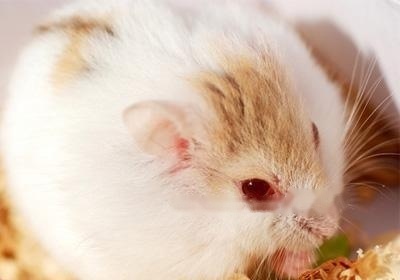
Amber Hamster
Length: 10-12cm
Ziyihamster(Dwarf Campbells Russian Hamster ) is a recessive gene (dd), and pairs of purple coat color genes give Campbell hamsters a purple sheen. The purple body in the purple coat is also called violet. The hair color is lavender, which looks pink and has a beautiful purple luster in the sun.
Ziyi and Zicang are very similar, so it is difficult to tell them apart. The purple warehouse hair and the white part of the abdomen have excessive hair color, and there is a hair color that is slightly darker than the purple hair, while the color of the purple clothes is more harmonious, and there is a yellow edge between the purple and the white of the purple clothes.
Chinese name: Purple Hamster
Latin name: Dwarf Campbells Russian Hamster
Kingdom: Animalia
Phylum: Vertebrata
Class: Mammalia
Order: Rodents
Family: Murine
Subfamily: Hamsteria
Genus: Pygmy hamster
Species: Campbell's Pygmy hamster
Purple hamster's coat color is seen in the dark room Not purple, the beautiful purple sheen can only be seen in sunlight. The purple body in the purple clothes is also called violet, and the coat color is lavender and looks pink.
The body length of an adult purple hamster should be between 10-12cm, the tail length should be between 1.6-3cm, and the adult weight should be about 30-50 grams. There is a black line in the middle of the back, which has appeared in many colors under captivity, and the belly hair is white.
Omnivorous, Campbell's Dwarf living in the wildhamsters, will eat many types of grains, seeds and vegetables. Nonetheless, it can be difficult to prepare a diet similar to these wild environments for hamsters raised. In the captive environment, the main food is various weed seeds and grains, and occasionally insects are hunted. They have the habit of storing food, and do not hibernate.
Purple Hamster is an omnivorous animal and can eat almost everything, but mainly eat whole grains. Many mice love to eat sunflower seeds, but it is not recommended as a staple food Eat it as a snack or as a teething tool.
Omnivorous, purple-coated hamsters in the wild will feed on a variety of grains, seeds, and vegetables. Nonetheless, it can be difficult to prepare a diet similar to these wild environments for hamsters raised. In the captive environment, the main food is various weed seeds and grains, and occasionally insects are hunted. They have the habit of storing food, and do not hibernate.